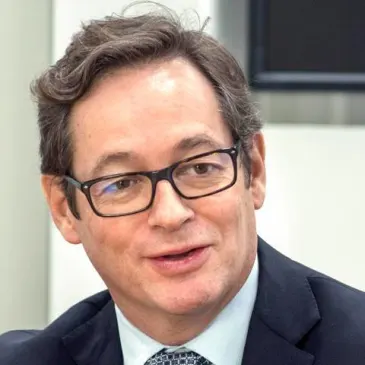The recent Paris Air Show ratcheted up the pressure on aerospace players as expectations for significant growth is being fueled by the demand surge that is dominating headlines. The industry has seen a commercial aircraft order rush (including the largest order in commercial aviation history). At the same time, European defense budgets keep increasing (+13% last year) and the U.S. has made a $19 billion equipment commitment in the first half of 2023 to support Ukraine in its ongoing conflict with Russia.
To seize opportunity, companies across the industry must navigate several obstacles. The dozens of conversations we had at this year’s show indicate these challenges are diverse and deeply entrenched, likely requiring a combination of short-term mitigation tactics and reanalysis of the long-term plan.
The most prevalent challenge is a widespread labor shortage. Finding, hiring, and retaining qualified talent is a major business issue across the aerospace, defense, and airlines industry, particularly in commercial engine maintenance, repair, and overhaul. Labor market tensions remain high, as evidenced by Spirit AeroSystems labor strike that occurred during the show and led to a weeklong work stoppage over wage-increase demands and other rank-and-file demands.
Finding and keeping highly skilled talent is a critical strategic consideration for an industry that is increasingly reliant on high-tech electronics and cyber solutions, particularly for defense applications. As a substantial portion of potential personnel opt for other industries, recruiters are left wondering what to do. Replacing shop floor management skills which either retired or left during the COVID-19 pandemic should also be high on the agenda. Once these skillsets are recovered through recruiting efforts, getting them to pre-COVID-19 productivity will take time.
Supply chain disruption continues to be a hurdle even as lead times are improving. The pre-COVID norm for lead times remains elusive, raising the potential that those levels are a thing of the past. Consider that the rougly-50+ week lead times for some materials, parts, and supplies quoted at last summer’s Farnborough Air Show have come down significantly, but lead times still remain at six-to-eight months, with some even longer.
Considering both issues mentioned above are impossible for any single player to control, it is critical that companies pay close attention to program management and execution. Many programs – spanning both defense and commercial sectors – require a myriad of complex systems, subsystems, suppliers, and internal processes to complete in a timely fashion. Supply chain disruption and labor shortages complicate this delicate dance, putting delivery schedules at risk. Programs should also increase their focus on stability of the demand to the supply chain. Constant changes further exacerbate the issue.
The strong bounce back in demand, seen in commercial orders for Airbus and Boeing, indicates steady growth ahead. Adding to the bullishness is the U.S.’s pledged support for Ukraine this year, which is already nearly equivalent to the total pledged in 2022.
However, the production ramp up will be a challenge, as demand outstrips the industry’s ability to produce planes, munitions, parts, and other supplies. Several conversations we had indicated there is a re-energized focus on planning, investments, and capacity to achieve a leading position when it comes to meeting customer expectations. AlixPartners suggests companies should give ample time to understanding the financing challenges that arise from elevated working capital requirements in this environment.
Many firms are already working to improve yield and throughput. As important as this is, more focus needs to be devoted to items requiring longer implementation times. This includes maximizing utilization of existing capacities, overall equipment effectiveness, and optimizing the entire production value stream.
Finally, decarbonization continues to be an issue that is soaking up more of the spotlight. The future of the industry’s response to this challenge was partially seen in the presence of e-VTOL players. AlixPartners has given extensive thought to this issue, recently publishing a piece analyzing how the ESG imperative drives this industry’s future competitiveness. A full understanding of the risks, opportunities, and responsibility is crucial for success.
Our A&D team participated in roughly 60 discussions over four days in Paris. While it was clear that the industry is recovering from the pandemic and demand is strong, no one is out of the woods. AlixPartners would welcome the opportunity to engage in discussions with you on solutions to these challenges and more.
Please contact a member of our team for further discussion:
Eric Bernardini
Global Lead, Aerospace, Defense, and Airlines
[email protected]
David Wireman
Partner & Managing Director
[email protected]
Alain Guillot
Partner & Managing Director
[email protected]
Stefan Ohl
Partner & Managing Director
[email protected]




